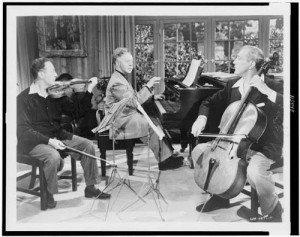
Chinese Zodiac
Credit: https://s-media-cache-ak0.pinimg.com
I don’t hold any faith in the zodiac and I would even go as far as to say I’m very dubious about it. How is it appropriate to classify human beings into twelve types? In some ways, astrology may seem scientific, insofar as it utilizes scientific knowledge about heavenly bodies, as well as scientific sounding instruments, like star charts. Actually, we do consider Western astrology as the original classification of personality models and it seems to have stood the test of time. A Japanese study found that people born December through February were uncompromising, while some Swedish research found that, at least in women, people born February to April enjoyed novelty. One more study reported that males born during the summer months weren’t so conscientious. Understanding personalities can unlock elusive human qualities and the description of each constellation enables us to understand more about that personality.
It is generally accepted within the world of astrology that people who share the same constellation are more compatible with each other. There are many epitomes in the classical music world, Klemperer and Brahms, Bohm and Bruckner, they are the same constellation. That is the reason why cognoscenti choose their artists for prominent recordings. There are a lot of enthusiasm and vigour in how they are conducted. As the sole representative of this symphony, they would not go wrong.
Some other elements are involved as we move on to other styles of classical music. The classification of elements in astrology makes it easier to understand all the Zodiac signs. The signs are separated by their characteristics:
Fire: Aries, Sagittarius and Leo
Water: Cancer, Scorpio and Pisces
Air: Libra, Aquarius and Gemini
Earth: Capricorn, Taurus and Virgo
One example is the theme song from the 1992 Summer Olympics in Barcelona, “Amigos Para Siempre” (translated as ‘Friends for Life’). This Latin-style theme song was written by Andrew Lloyd Webber (an Aries), and performed by Sarah Brightman (Leo) and Jose Carreras (Sagittarius) – all under the Fire sign. Could this have brought more passion to the Games? Maybe, but it’s certainly one of the most popular Olympic songs.
Sarah Brightman & José Carreras – Amigos para siempre
So the higher principle of collocation is:
Fire is best suited with Air
Earth is most compatible with Water
Here’s another example: Why might Mahler (Cancer) have asked Freud (Taurus) for help when he found out that his wife Alma was having an affair? Well, Water signs, like Cancer, work best with Earth signs, like Taurus. Mahler was widely read, and he favored Fyodor Dostoyevsky (Scorpio, both in Water signs). Mahler guided his believer, the great conductor, Bruno Walter (Virgo, Earth) to read The Brothers Karamazov, ‘It takes my soul’, Walter wrote in his memoirs. He thought himself a pygmy against this great writer.
Antonio Vivaldi – Isaac Stern – Pinchas Zukerman – Shlomo Mintz – Itzhak Perlman

The Million Dollar Trio
Credit: http://2.bp.blogspot.com
But we don’t have to cleave to these principles of constellation. The Million Dollar Trio pitted these super stars together: pianist Arthur Rubinstein (Aquarius), cellist Gregor Piatigorsky (Aries), and violinist Jascha Heifetz (Aquarius). Rubinstein refused to break with tradition when Heifetz insisted that his own name come first since he was the most famous member of the trio. “Even if you were God, we’d still be the Rubinstein-God-Piatagorsky Trio,” Rubinstein told Heifetz. They were dissolved in the 1950s. We can’t find any competitions where there was cooperation in their recording.
Rubinstein, Heifetz and Piatigorsky – Mendelssohn



